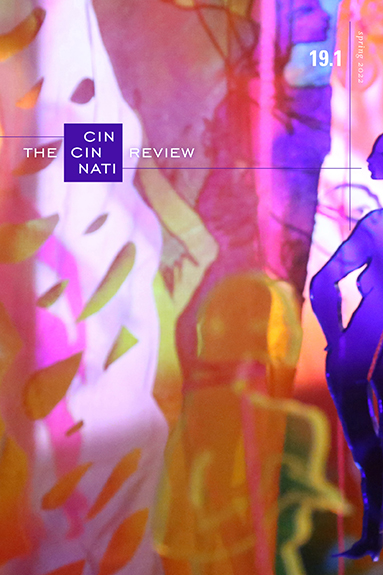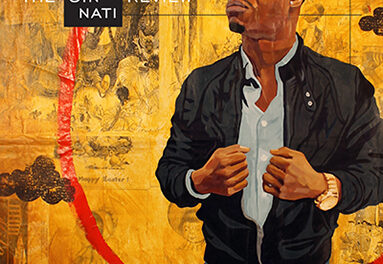We are pleased to share this craft essay by Aimée Baker on writing crime-inspired poetry and nonfiction, which appeared in Issue 19.1 as part of a special multigenre review and essay feature on the ethics and craft of crime writing (read the entire feature here):
The winding two-lane road rises steadily ahead of me as I drive toward the Adirondack Park. Along the way, the speed limit drops every few miles as I pass through hamlet after hamlet, places that are simply a cluster of houses set closer to the road than usual. I’m on my way to find Cleo Tellstone, or rather her grave. Cleo was fourteen and had just graduated eighth grade when she was murdered in 1934 on a walk home from her sister’s house. According to historical newspaper accounts, she wanted to show off her new perm, a gift from her family to celebrate the occasion of her graduation. The day of my journey is the eighty-seventh anniversary of her death; I plan to leave flowers beside her headstone.
When I write Cleo’s name, I feel as though I am calling her to life again. Not the flesh-and-blood teenager who ran through the undergrowth of the Adirondack Mountains. Not the girl who slipped on high-heeled shoes to totter her way across several dusty miles to visit her older sister, with her dog, Rover, her only companion for the trek. It’s just the barest whisper of her that I can manifest, saying her name after all these years, knowing that you too now know her name. This remembering is what I once hoped for myself, a girl who never thought she’d survive her teen years, let alone make it into her thirties. As a teenager I would have wanted to be remembered as a girl who sketched horses when she was bored or who would lie on her belly for hours trying to coax stray cats in from the rain. But even then, I knew my abuser, my brother, would have a story that would eclipse mine if he finally managed to do what he promised and murdered me. My story would become, finally, his story—and the story you would want to hear.
Historically, true crime (everything from Puritan screeds on executions to the lurid comics of the 1930s to the explosion of contemporary true-crime podcasts and television docuseries) has done little to center the stories of victims, instead reducing them to stock characters existing only to fulfill the wishes of the perpetrator over and over again, the crime replaying every time someone interacts with the text. At best, that means their presence is there only to add to the body count. And, at the genre’s most grotesque, their bodies are laid bare as we become voyeurs, shadow replacements of their killers. In her essay, “Don’t Use My Family for Your True Crime Stories,” which appeared on the CrimeReads site in 2019, Lilly Dancyger writes of true crime, “I wish that the audiences and creators of these shows would give a little extra thought to how the dead woman (because it’s almost always a woman) at the heart of the story is treated in the telling. Is she treated like a human being who had more life left to live, with people who loved her, who will never be the same because of her loss? Or is she reduced to a gory crime-scene photo and a plot point in a story about a man who doesn’t deserve anyone’s fascination?”
Perhaps it’s a question of craft. As Alice Bolin says in her book Dead Girls: Essays from Surviving an American Obsession, in crime fiction and thrillers, “it’s an understandable temptation for investigators to view criminals as mythic opponents, to create a theory of violence that looks at the gun, not at where it’s pointing. Because when you take away the monster, what are you left with?” The same can be said for true crime—if writers reject this approach, how do they tell these stories, ones where the intrigue isn’t in the drive to find out if the killer will be caught and justice served?
As a poet and lyric essayist, my presence in this genre feels more peripheral, but the care and attention Dancyger urges is still applicable—even poetry and lyric essays are a part of crime writing’s long tradition. With its layered and developing history, crime writing is fraught with unique ethical dilemmas and problematic undercurrents, but it is a genre writers can still shape and mold as they decide how to tell crime stories. Writers can, as Dancyger points out, reject stories about men and their violence by centering the stories of victims, making explicit the investigative process, and avoiding dehumanizing victims through explicit explorations of the violence done to them.
Tell the Story of the Girl Herself
In 2015, as I finished writing my poetry collection Doe (University of Akron Press, 2018), which is about missing and unidentified women, I began writing what would be my last poem for the book, a twelve-part poem about the women who are connected, either by speculation or confession, to a well-known serial killer (whose name I purposefully omit here). Since his arrest and trial, countless books, movies, documentaries, essays, articles, and podcasts have been produced about him, most focusing, at least in some part, on his handsomeness and women’s attraction to him. He has become so famous that you may have already guessed who he is. While watching a retrospective on the ’70s that included him, I understood the deeper motivation behind my writing Doe: to center the women who are missing, to call out their names instead of his.
To remember the victims, we need to place them on the page separate from their status as victims. It is sometimes challenging to do so: Cleo Tellstone, for example, had been alive only for fourteen years, and the landscape of that life—full of heartaches, disappointments, joy, laughter—isn’t available for me to know. She left no diaries, and her siblings have long since passed away. What is left are the court proceedings and newspaper articles filled with details of the crime and the trial, all of which necessarily focus on her killer. To find Cleo again, to tell her story, is to make absence become presence. Cleo lived on a farm in the Adirondacks with her parents and half-siblings. There is a grainy photo of her published in local newspapers, an image I linger on in my essay as the only image I have of her. I write, “Cleo Tellstone holds her toddler niece whose round cheeks are framed by a hat, her coat zipped right up to her chin. Cleo is in profile, her hair peeking out of her own hat. Her bare hands hold her niece, one wrapped around the child’s back and one clutching the top of the girl’s thigh to support her. Cleo’s eyes are downturned, not looking at the camera or at her niece, but her mouth is open as though she’s just finished speaking.” While much of Cleo’s life is missing in the historical record (and what is there are graphic details of her murder), lingering on her image allows readers to see her humanness, caught in a moment of action just as she finished speaking, a reminder that she once had a voice with which to tell her own stories.
Become the Detective
Uncovering who Cleo was, in no exaggerated way, like becoming a girl detective, a Nancy Drew of the newspaper and genealogical archives. One way to tell the true-crime story is to allow the writer’s presence in, the sifting through the details. In her essay “Nancy Drewing the Essay: A Guide to the Literary Expedition,” Sonja Livingston writes, “One day while staring into my laptop, I found Nancy Drew looking back. What could I do but follow her lead? I’d always used writing to help solve mysteries. Now I began to add more dynamic investigative elements to my work.” While Livingston speaks more of the practice of curiosity in writing any literary essay, the value of placing yourself on the page in all your Nancy Drew glory is that the lens also shifts away from a perpetrator-centered narrative.
While many true-crime stories use this method in a way that still centers perpetrators, doing so diffuses their presence. I’ll Be Gone in the Dark (Harper, 2018) is as much about Michelle McNamara as the Golden State Killer, and Sarah Koenig becomes the center on which the first season of Serial spins. In each, McNamara and Koenig become the Nancy Drews of their respective creations, inviting readers along as they search for clues and assemble their findings. While McNamara’s narrative enumerates the hours she spent combing through hundreds of police files looking for answers, Koenig’s team scanned and shared documents to the Serial website, deepening the immersion for listeners and wrapping them in the mystery of the case and her own pathway through the evidence.
Even when readers want more answers, crave the details about the killers and their stories, the writer doesn’t have to fulfill that desire. Combining these methods, creating a victim-centered story while Nancy Drewing your way through the piece, leaves little room for a perpetrator-centered narrative to take shape. There’s simply not enough air left to breathe them into life on the page.
Avoid Gratuitous Gore
In the summer of 2021 I attended my first CrimeCon, virtually. Many women in the chatbox were eager for upcoming descriptions of killers and the gory details of their crimes. Their knowledge was practically encyclopedic about the cases they followed intently, such as the murder of Rebekah Gould, who was twenty-two when she was killed inside her boyfriend’s home. Her case had gone unsolved for sixteen years before private investigators and podcast creators pushed forward the investigation. As such, the convention featured two panels about her case. From the comfort of my bed I watched the first panel begin with a video featuring a song and pictures of Gould before shifting to a recording of her father speaking about her. The work seemed victim-centered. But, as the panelists spoke afterward, one interrupted their explanation of the investigation’s progression to add details of the state of her body and its level of decomposition as it arrived at the morgue, something mentioned only for its sensationalism, evidence of only the passage of time and not necessary in the investigative story about who murdered Gould.
In this reduction, we lost sight of Gould as a person. Dehumanization allows true-crime audiences to catalog wounds instead of mapping the intricacies of a person’s life. To treat victims as people rather than bodies, true-crime writers can, and must, resist the urge to display the victim for shock value. It is enough to state matter-of-factly what happened without using those details solely to engage the reader. In I’ll Be Gone in the Dark, Michelle McNamara brings readers into each crime scene, a place where the aftermath of violence could easily reign supreme in gratuitous and graphic detail. Instead, McNamara writes simply and directly. Of Manuela Witthuhn’s murder, she writes, “Manuela was in bed lying face down. She was wearing a brown velour robe and was partially wrapped in a sleeping bag, which she sometimes slept in when she was cold. Red marks circled her wrists and ankles, evidence of ligatures that had been removed. A large screwdriver was lying on the concrete patio two feet from the rear sliding glass door. The locking mechanism on the door had been pried open.” Here, by using only the bare details of the crime, McNamara is able to include facts about Manuela—her robe, her sleeping bag, the way she was cold at night—that remind readers why this story is being told.
Navigating the true-crime realm is fraught with ethical concerns about the glorification of perpetrators and the revictimization of victims and their families through that process, and the discussions of craft are too sparse. This is thanks, in part, to the dismissiveness with which the genre is treated by literary writers: for example, as Joyce Carol Oates wrote in 1999, “few writers of distinction have been drawn to” crime writing. But if writers work toward a more ethical practice, one in which they reveal the real heart of the story, as Dancyger implores us to, rather than focusing on titillation or sensationalism, they can begin to form the genre into something more ethical, to tell the story of Cleo Tellstone and the others like her rather than of their killers.
Aimée Baker is the author of Doe (University of Akron Press, 2018), winner of the Akron Poetry Prize and subject of She, a documentary film about missing and unidentified women, starring Kate Mulgrew and Raven Goodwin. Baker’s essays have been Best American Essays notables, and her fiction has appeared in North American Review and Gulf Coast.











